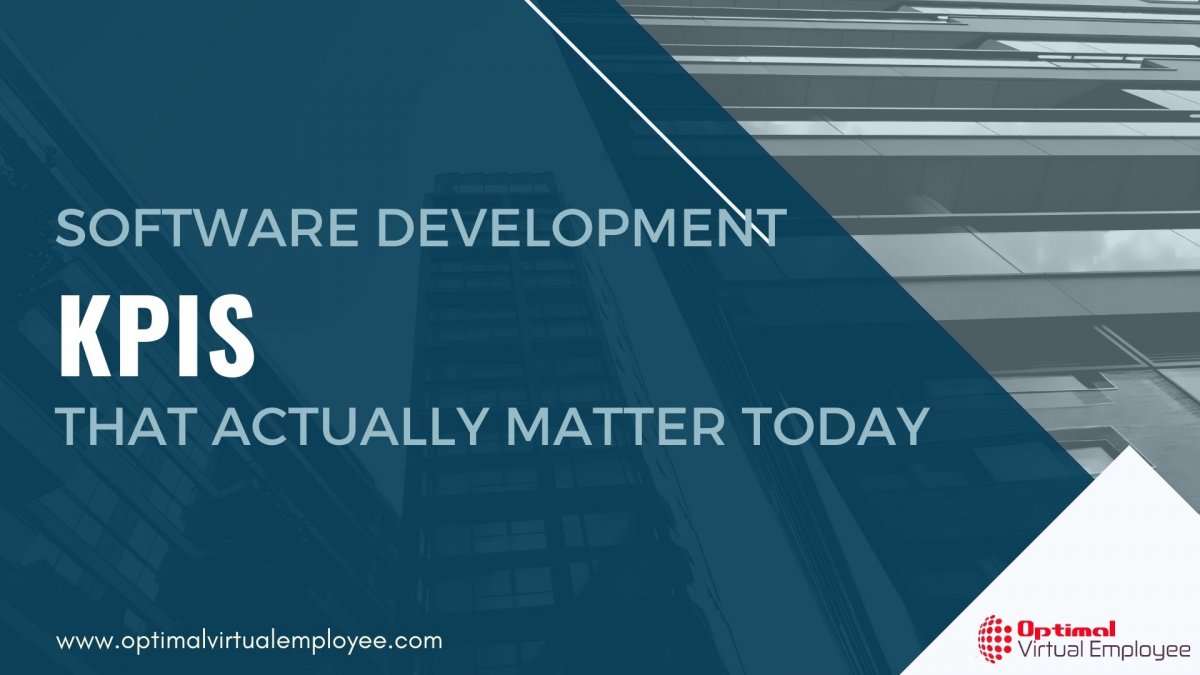Measuring data points like lines of code, no. of hours worked and bug fixes are inadequate KPIs that are easier to assess but fail to provide any actionable insights.
How do you assess the performance of software development teams?
Are you obsessed with measuring outputs instead of outcomes?
Do you measure individual developer performance rather than team performance?
If these questions or the ones similar to these come to haunt you now and then, we got you covered. Here are some software development KPIs that matter:
Software Development KPIs that Matter Today
-
Lead Time
Lead time demarcates the time taken from the point a customer requests the issue the right is satisfied. Experienced software developers can reduce the lead time by simplifying decision making and reducing the wait time to go from an idea to the finished software product.
To optimize your software development process, you must measure lead time to each task in your backlog and have it on visual display for the team’s preference. This will help streamline functions with a high lead time. Over some time, businesses must calculate the average lead time for all tasks on the backlog that have not been selected for the upcoming release. If the average increases over time, the development team may be facing a capacity crisis.
-
Deployment Frequency
Software development processes thrive on updates, feature additions and improvements that promise increased efficiency and accuracy. Deployment frequency shows the number of times software has been deployed to production in a period, usually a sprint. Software businesses are free to choose whether they want to measure the frequency on a daily or weekly basis.
In an ideal case scenario, deployment frequency must remain stable or must entertain a steady increase over time. Improvements in deployment frequency bring about greater agility and foster adherence to the changing users’ needs. Any fall in the metric spells bottlenecks within the development workflow.
All said, there is no point having a high deployment frequency allowed with increased deployment time or a higher failure rate. In such cases, it’s better to hold off further deployment until existing issues are resolved.
-
Change Fail Percentage
Change fail percentage signifies the percentage of changes to production that fail, including hotfixes, rollbacks, fix-forwards, etc.
Businesses can record these in a table every time they deploy to production, and some unit/integration/UI/system test fails. In the case of pre-deployment approvals, when someone rejects the deployment, you can set it up for recording automatically. If a bug gets spotted after the deployment, it’s best to create a bug associated with the deployment and count it after every sprint.
-
Mean Time to Restore (MTTR)
Software failures are common, and it makes absolute sense to measure how swiftly a software development team recovers from failures rather than tracking their frequency of occurrence. Meantime to restore shows how much time it takes to solve a critical situation like a service outage.
This KPI is easy to track manually, just time it since the beginning of the outage until it is resolved. Businesses use MTTR to support contracts such as Service Level Agreements (SLA). IT Service Management tools are used to create tickets when a failure is reported to a business. Ticket creation can be manual or through automated monitoring systems. The same method is used to report the resolution.
-
Release Burndown
It is a kind of chart that can showcase how the software development is progressing, how much of the pre-planned software functionality remains to be done, and when you can expect the release to be completed.
Businesses must be concerned if the release forecasts aren’t updated as the team works consistently, mostly if no progress is made over several iterations. Sometimes, scope grows faster than the group can absorb it and results in severe lags. It’s essential to ascertain that the team is shipping incremental releases throughout the development of an epic.
-
Escaped Defects
Escape defects is a KPI for a product component, that shows how many bugs or issues were identified, soon after the software was already in production. An increasing number of escape defects indicate a sign of a flawed quality process.
All software deployment projects run the risk of sparking defects. All software developers including freelance or virtual employee, must make scope for occasional errors.
The defect escape rate depicts how often defects are uncovered in pre-production versus during the production process. This figure can provide a valuable overview of the overarching quality of software releases.
-
Net Promoter Score
NPS is used to measure customer satisfaction from a software product. It ranges between -100 to +100, indicating how likely a customer is to recommend the product to someone else. NPS survey is conducted, and then the NPS score is calculated by adjusting the percentage of promoters minus share of detractors, ignoring passives.
In the End
Very often, businesses doubt the performance and productivity of remote software development teams. Companies can use the knowledge of these relevant software development KPIs to learn how their decision to hire software engineers has impacted their overall team performance. The right choice of KPIs can boost employee morale, keep the progress on track and direct the software development team towards success.
Are you looking to outsource software development projects? Rate us now !









